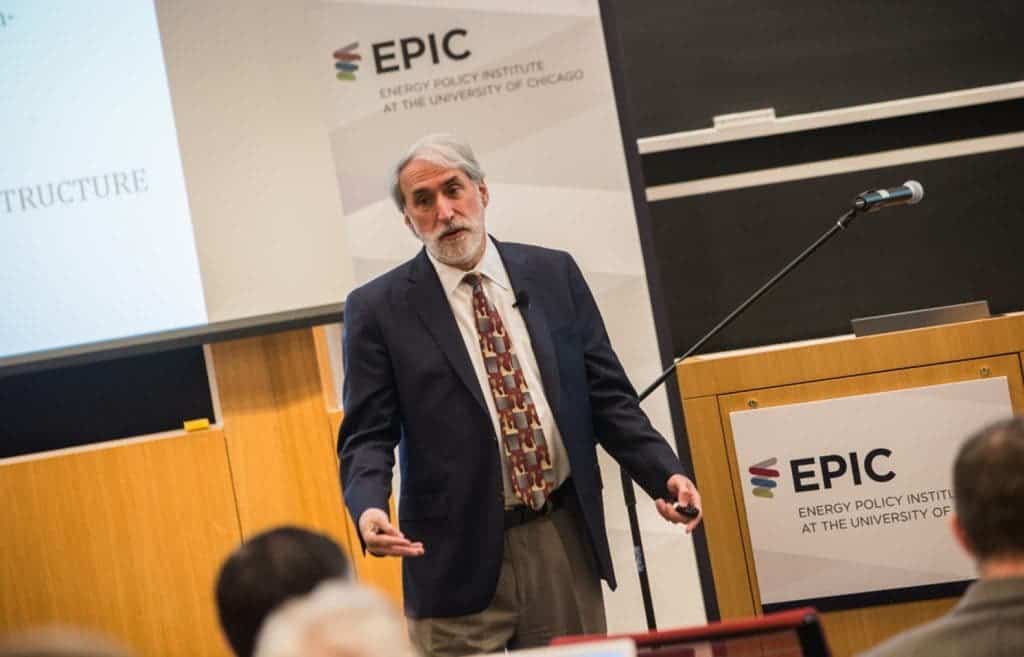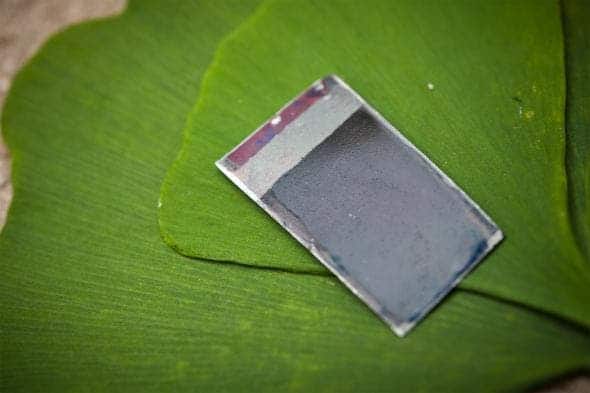Daniel G. Nocera, the Harvard professor who made headlines five years ago when he unveiled an artificial leaf, recently unveiled his latest work: an engineered bacteria that converts hydrogen and carbon dioxide into alcohols and biomass. One can be used directly as fuel to power vehicles that run on conventional fuels, while the other can be burned for energy.

Dr. Daniel Nocera speaking at the EPIC seminar series hosted by the University of Chicago. Image: University of Chicago
“The problem with the artificial leaf,” Nocera said last year, is that “it makes hydrogen. You guys don’t have an infrastructure to use hydrogen.” So, he and his team focused on integrating the arguably successful artificial leaf that splits water into molecular hydrogen (H2) and oxygen (O2) with a system to produce more accessible energy. Eventually, they got the idea to use an additional step to generate liquid fuel using a bacteria.
Plants are about one percent efficient at turning sunlight, nutrients and CO2 into biomass — the organic matter that can be turned into energy. When Nocera and his colleagues first started with bacteria, their aim was to produce fuel at five percent efficiency. Amazingly, they managed to produce biomass at 10.6 percent efficiency and alcohols isopropanol, isobutanol, isopentanol at 6 percent efficiency.
Their prized-bacteria, Ralston eutropha, was initially engineered to eat hydrogen and carbon dioxide and output adenosine triphosphate (ATP) in return. Biologists call ATP the energy currency of life because the molecule feeds virtually every biological process. They made a breakthrough one day after they added other genes that convert ATP into alcohol in the same process, drastically upping efficiency.
According to a Forbes report, a one-liter reactor packed with Ralston e. can capture 500 liters of CO2 per day and produce around 2 kilowatt-hour of energy. Because the fuel is destined to be burned, the captured CO2 is returned back to the atmosphere. Being technically carbon-neutral, the resulting fuel is more environmentally friendly than conventional fuels based on petroleum or corn-derived ethanol which has a questionably positive carbon life cycle.
“I can just let the bugs grow exponentially. They’re eating hydrogen, that’s their only food source, and then they breathe in CO2, and they keep multiplying. They procreate, and that goes into an exponential growth curve,” Nocera told Forbes.
Nocera says he is currently seeking investment to implement the technology, but no in the states. He has his eye set on India where the technology could prove most useful. There are more than 300 million people living without access to electricity in India, and since the artificial leaf-bacterial reactor system is essentially off-grid there is a big potential for a successful implementation.
“There’s some wealthy people that I know,” he continued. ”I want them to invest in Indian scientists, in India, and make it in India. So that’s going to be my new model. And we’re going to see if it works. I have a cool discovery, it’s now got to go to scale-up, but I want them to do it,” he added.










